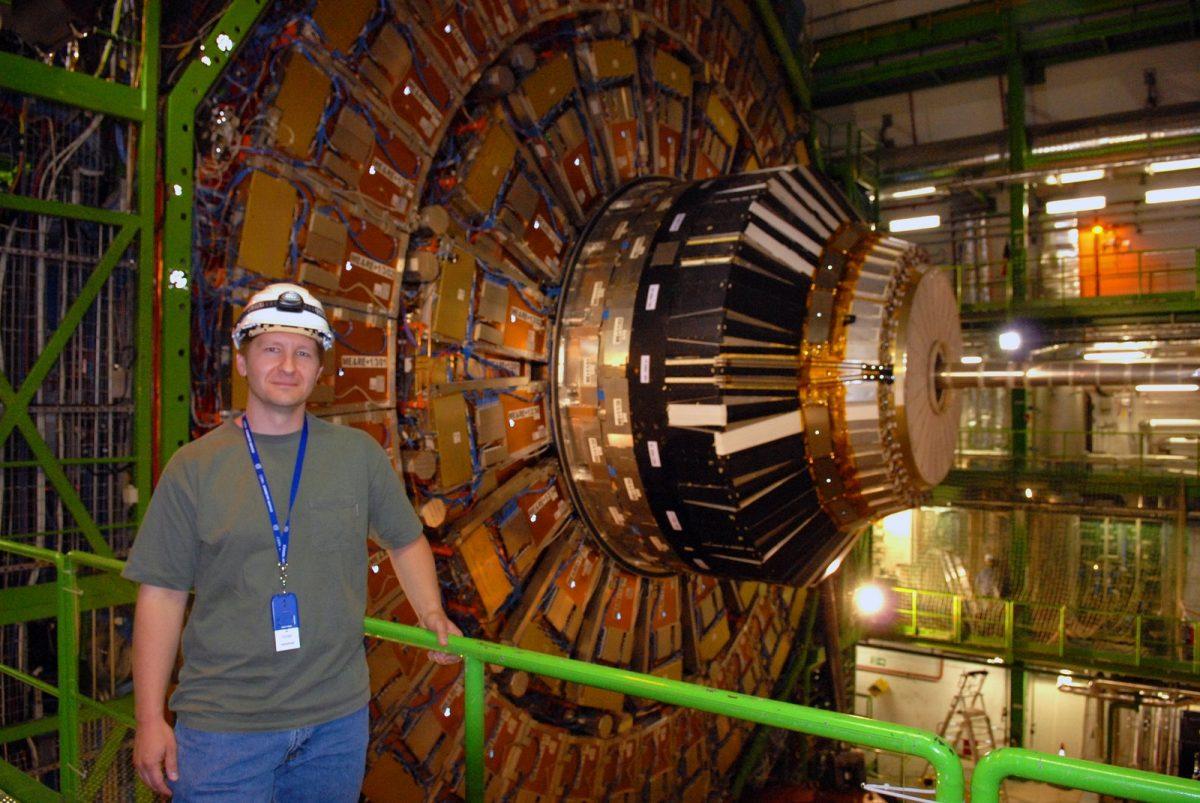A typical day at CERN — the world’s largest particle accelerator — is anything but typical.
Colleagues may be from the United States, Russia or any of the other dozen nations involved in the project. The workday might be a series of meetings. It also might involve building and testing large equipment to examine the universe’s smallest particles.
A group of Texas A&M physicists have worked with CERN in some capacity for decades. They regularly travel to CERN’s massive complex, which straddles the border between Switzerland and France, and say the work is a mixture of mundane office work and cutting edge science.
Jason Gilmore, Texas A&M research scientist, said the A&M research group works with the Compact Muon Solenoid experiment, a building-sized particle detector that searches for subatomic particles after the LHC smashes them together at near-light speed.
“I wake up, I go there and I work all day in the lab, a high-tech warehouse housing electronics for the experiment,” Gilmore said.
Most of Gilmore’s day is spent building and testing equipment. He said working with scientists from all around the world provides a neat atmosphere. While the researchers may come from opposite sides of the globe and have completely different native languages, everyone speaks English when discussing business.
Texas A&M has a significant part in the CMS experiment. Professor Safonov said his role and that of his co-workers is primarily to study the Higgs boson, a subatomic particle responsible for giving particles mass.
“I am searching for exotic Higgs [boson] decays and possible additional Higgs bosons. My colleagues are searching for supersymmetry in various final states and Ricardo Eusebi [physics professor] is working on Higgs studies, but in a different area than mine,” Safonov said.
According to Keith Ulmer, assistant physics professor at A&M, CERN originated at the end of WWII as a multinational project to bring many countries together. Today, CERN continues to foster collaborative research to study the smallest pieces of matter and how they interact.
For many, the particle accelerator is very large and confusing. Ulmer said the accelerator’s operation, while complex, can be described by simple physics.
“We [physicists] accelerate particles at high speeds, slam them together and see what comes out,” Ulmer said. “When the [particles] collide, you can turn that energy into mass, which is seen in Einstein’s equation. If you can get enough energy in the same space at one time, you can create new heavier particles.”
Gilmore said there is still a lot of discovry to be made.
“We have not exhausted the discovery potential of this machine,” Gilmore said. “We have just scratched the surface. The real discovery is expected to come.”
Atom Smashers
October 12, 2015
Photo by Provided
CERN
0
Donate to The Battalion
$2065
$5000
Contributed
Our Goal
Your donation will support the student journalists of Texas A&M University - College Station. Your contribution will allow us to purchase equipment and cover our annual website hosting costs, in addition to paying freelance staffers for their work, travel costs for coverage and more!
More to Discover










